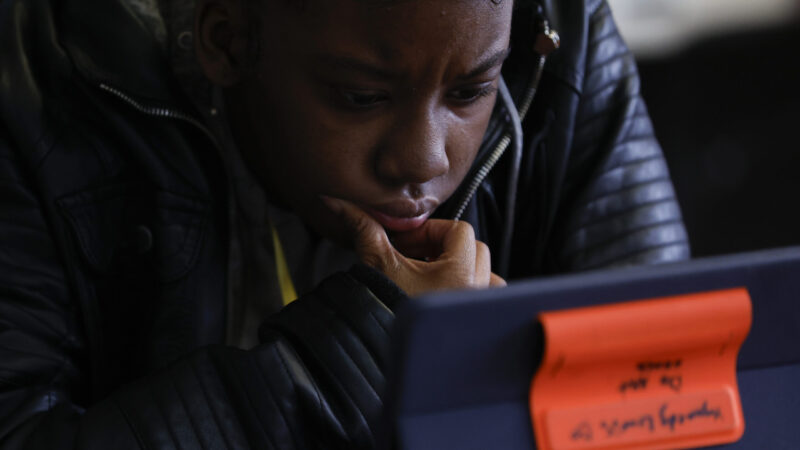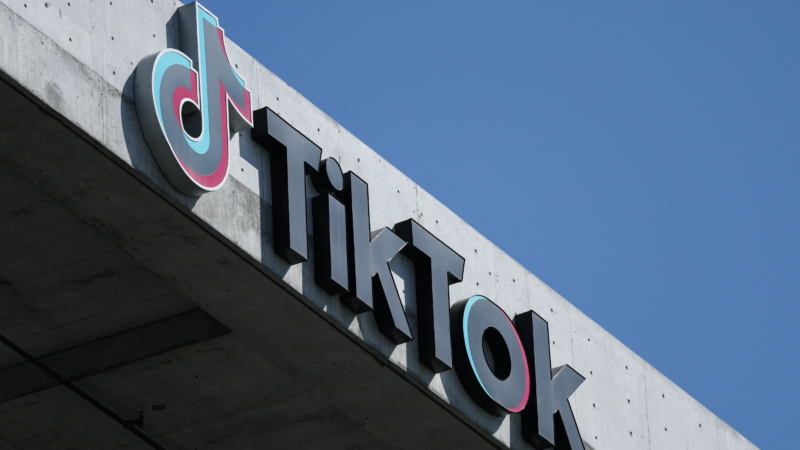SATs are going all digital, and students have mixed reviews of the new format
Kynnedy Lewis watches her screen as she prepares for the digital SAT, Wednesday, March 6, 2024, at Holy Family Cristo Rey Catholic High School in Birmingham, Ala.
By Carolyn Thompson of the Associated Press and Rebecca Griesbach of AL.com
BIRMINGHAM, Ala. (AP) — As SAT season kicks off this weekend, students across the U.S. for the first time will take it with computers and tablets — and not the pencils they’ve used since the college admissions test was introduced nearly a century ago.
It’s not unfamiliar territory for today’s digital natives, but some are still warming up to the idea.
“I’ve always been the type to do things on paper, so at first I didn’t really like it, but it’s not terrible,” said Rachel Morrow, a junior at Holy Family Cristo Rey Catholic High School in Birmingham, where students have been practicing with a digital version. She likes a timer function that keeps her on track without having to watch the clock.
The digital SAT’s launch comes as its administrator, the College Board, and backers of standardized tests hope to win over schools and critics who are skeptical of its place in college admissions.
The COVID-19 pandemic canceled a full SAT testing season and intensified longstanding questions about whether the exams favor students from high-income families. Many colleges dropped test requirements, and today most still leave it up to students to decide whether to submit scores.
Recently, a small number of highly selective colleges including Dartmouth and Brown announced they would resume requiring SAT or ACT scores. They say the tests allow them to identify promising students who might otherwise be overlooked — students from schools that don’t offer advanced coursework and extracurriculars, and whose teachers may be stretched too thin to write glowing letters of recommendation.
Many students see upsides to taking the SAT, even if colleges don’t require their scores.
“A lot of people are going test-optional now but if you do put your scores in, you most likely will have an advantage,” Morrow said.
Her class has been practicing on the digital version of the SAT. The school four years ago took the unusual step of introducing a mandatory SAT prep course for juniors in partnership with CollegeSpring, a nonprofit that provides in-school preparation to help students from low-income backgrounds position themselves better for college.
The test prep teacher, S’Heelia Marks, said the SAT is especially important for students like hers who are predominantly Black and Latino and often from low-income households.
“In America, those are strikes against you,” Marks said. “You need to have all of the advantages you can in order to compete. And so for colleges, if they’re test optional, and they don’t know the school you’re coming from or trust that those grades aren’t inflated in any kind of way, they’re going to go lean on their feeder schools that they do trust, and they’re actually excluding people more than you think they are.”
The SAT also can unlock scholarships, but scoring well enough to qualify often requires intense test prep, which many low-income Americans don’t have access to.
The digital test is an hour shorter but set up and scored the same way, with two sections — one math, the other reading and writing — worth up to 800 points each. It adapts to students’ performance, with questions becoming slightly easier or harder as they go. Test-takers can use their own laptops or tablets but they still have to sit for the test at a monitored testing site or in school, not at home. To prevent cheating, students can’t work in any other program or application while the test is running.
Going digital will not resolve the debate around equity. While critics say the SAT and the alternative ACT are biased toward better-resourced, high-income students, supporters say they remain the best tool for predicting success in college and can be considered in the context of socioeconomic factors like where a student lives.
Test administrators say the digital SAT addresses what is within their control by including a built-in advanced calculator for use during the exam, and by offering free full-length practice exams. And they say the results may reflect inequities in the education system, but do not cause them.
“Claims that are made about inequities around standardized testing — that on a macro level is something that, of course we pay attention to, of course we care about,” said Priscilla Rodriguez, who leads the college readiness assessments division at the College Board. “But performance differences on tests like the SAT mirror performance differences seen in every standardized assessment given in this country, going back to tests that are given to kids in third grade.”
About 1.9 million students in the class of 2023 took the SAT at least once, up from 1.7 million in 2022, according to the College Board.
Emerson Houser, 17, is taking the test on Saturday in Columbus, Ohio. She is planning to submit her scores to colleges she applies to regardless of whether they are required. Judging from her online practice tests, she prefers the digital version.
“We didn’t have to fill in the bubble sheet so we just had to focus on our screens the entire time,” she said. “It made it easier to read the prompts and respond.”
At Holy Family Cristo Rey, Ashley Chávez-Cruz, a junior, said there are features that make the digital test feel familiar, like a highlighting option. But she said it’s harder to mark up problems and passages because you can only make notes in the digital version in a text box off to the side.
But there’s also something less nerve-wracking about taking a test digitally.
“With the paper test, especially because you’re in a quiet room with the clock ticking up there silently, it definitely brings in the sense of an exam,” she said. “With the digital SAT, I still knew it was an exam in my mind, but I was less anxious.”
Taiwan’s president pledges to defend island’s sovereignty after Chinese military drills
Taiwanese President Lai Ching-te vowed to defend the self-ruled island's sovereignty in the face of what he termed China's "expansionist ambitions," days after Beijing wrapped up live-fire military drills near its shores.
Deaths reported during widening protests in Iran sparked by ailing economy
The protests began due to economic pressures, with Iran's currency rapidly depreciating. Demonstrators have also chanted against the country's theocracy.
Congress failed to extend Obamacare subsidies. This Democrat says Trump can save them
Sen. Peter Welch, D-Vt., says he thinks the Senate can pass a "retroactive" Affordable Care Act subsidy extension, but "we need President Trump."
Rideshare union rights, social media limits and other state laws taking effect Jan. 1
Every new year, public media reporters across the country bring us some of the new state laws taking effect where they are. Here are six in 2026.
Guides to help you tackle your New Year’s resolutions
From building your strength to tackling credit card debt, NPR's Life Kit has a newsletter journey to help you tackle your New Year's resolution.
Guides to help you tackle your New Year’s resolutions
From building your strength to tackling credit card debt, NPR's Life Kit has a newsletter journey to help you tackle your New Year's resolution.






